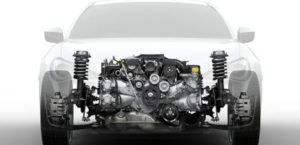Nissan Serena
The Nissan Serena is a Japanese minivan vehicle manufactured by Nissan Motor Co., Ltd. since 1991. The 5th generation of the model has been produced since 2016. The name of the car comes from the Latin word “serēnus”, meaning “clean / calm”. Initially, the car was made for the Japanese market, and since 1992 – for the international in left-hand drive design at a factory in Spain. Cars were also produced in Malaysia, Indonesia, the Philippines, Thailand and several other countries.
Nissan Serena, 1st generation (C23), 1991–2002

The first generation of the Nissan Serena minivan was produced in Japan from 1991 to 1999, and in 1992, the left-hand drive version of the car (including the van body under the names Nissan Vanette E and Quest Cargo) began to be assembled in Spain. In the cabin, the car could have five or eight seats. The range of engines consisted of 1.6 and 2-liter gasoline units with a capacity of 100 and 130 hp, respectively, as well as 2-liter naturally aspirated and turbocharged engines (76, 91 and 97 hp). In 1995, a 2.3 turbodiesel was installed on the European Serena, which developed 135 hp. The car had modifications with rear and all-wheel drive, gearboxes – a five-speed manual or a four-speed automatic.
Nissan Serena, 2nd generation (С24), 1998–2012

The second generation of the model debuted in the Japanese market in 1999; in Europe, the Nissan Serena was no longer produced or sold. The basic version became front-wheel drive, an all-wheel drive transmission was offered for a surcharge. The minivan, which existed in seven- and eight-seater versions, was equipped with 2.0 (147 hp) and 2.5 (160 hp) gasoline engines, as well as 2.0 (145 hp) and 2.5 (150 hp) diesel engines, which were aggregated with a four-speed automatic transmission or a variator. The assembly of the version of this model was also organized in China, Malaysia and Taiwan.
Nissan Serena, 3rd generation (С25), 2005–2011

The eight-seat third-generation minivan lasted on the assembly line from 2005 to 2010, having survived a light restyling in 2008. As before, the Nissan Serena had modifications with front- or all-wheel drive. There was only one power unit – a two-liter gasoline engine with a capacity of 137 hp paired with a continuously variable variator. A copy of the Serena was also sold in the Japanese market under the name Suzuki Landy.
Nissan Serena, 4th generation (С26), 2010–2016

The fourth generation Nissan Serena minivan was produced from 2010 to 2016. The car was equipped with a two-liter gasoline engine with direct injection, developing 144 or 147 hp (on front-wheel drive and all-wheel drive versions, respectively). All versions were equipped with a stepless variator. In Japan, a copy of the model was produced under the name Suzuki Landy.
Nissan Serena, 5th generation, 2016

The fifth generation of the Nissan Serena minivan has been produced in Japan since 2016. The car is sold in the local market, as well as in some Asian countries with left-hand traffic.
The machine was created as a result of a deep modernization of the previous model. The former dimensions and the general layout of the cabin have been preserved, but the design of the car is new – with “two-story” lighting equipment and a massive radiator grille. The interior has a new front panel with a modern design, a large screen of the multimedia system and another color screen of the instrument panel. The Nissan Serena still has three rows of seats, and the side sliding doors are powered and have a contactless opening function from the outside.
The minivan is equipped only with a hybrid power plant. Under the hood of the car is a 147 hp two-liter gasoline engine, a CVT and a small electric motor that develops 2.4 hp.
Nissan Serena became the brand’s first mass-produced car equipped with an autopilot. The system, branded as ProPilot, operates on highways at speeds between 30 and 100 km/h. After turning on the autopilot, the car independently keeps its lane, focusing on the marking lines, maintains the speed, controls the distance to the car in front, and, if necessary, is able to slow down to a complete stop. In the future, it is planned to give the autopilot new “abilities”.





